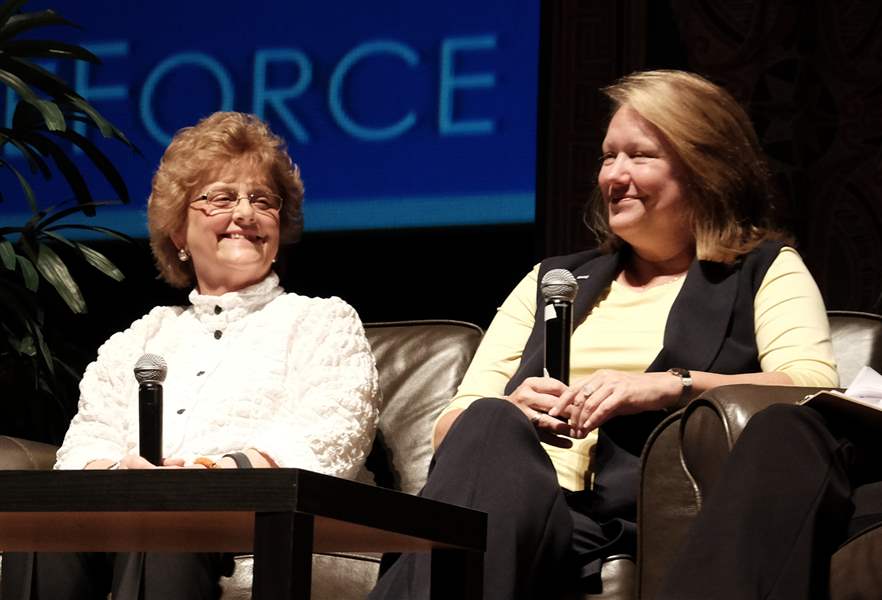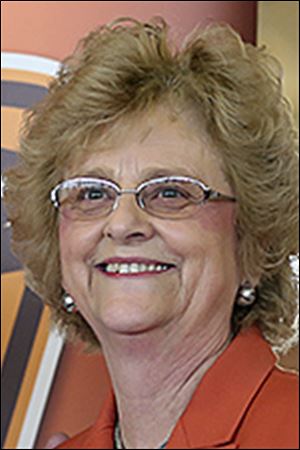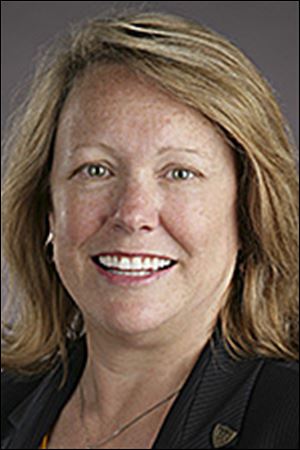
SATURDAY ESSAY
Investing in higher education vital for Ohio
12/10/2016
Bowling Green State University president Mary Ellen Mazey, left, and University of Toledo president Sharon Gaber.
The Blade/Jetta Fraser
Buy This Image
At a time when northwest Ohio is adding jobs and businesses are investing again in the Greater Toledo region, we need to think more about our future work force. We simply do not have enough workers with college degrees to meet work force needs.
As the presidents of northwest Ohio’s two premier public universities, we are deeply concerned about this looming crisis and are committed to working together to develop solutions. Closing the “degree attainment gap” will require a concerted effort and investment from higher education, business and industry, our elected leaders, and all Ohioans.

Mazey
The data compiled by BGSU’s Center for Family and Demographic Research tell the story. Just 33.7 percent of Ohioans age 25 or older have an associate degree or higher. Northwest Ohio fares worse. In our 18-county region, that number is just 30.2 percent.
Contrast those numbers with the growing need for a college-educated work force, and you can begin to see our regional and statewide challenge.

Gaber
By 2025, it is estimated that 65 percent of Ohio’s work force will need a postsecondary degree to meet employer demands. That will require 1.7 million more degree-holders. At current graduation rates, we will fall well short of the need, with only 43 percent of working adults having a degree by 2025.
A disturbing aspect of this quandary is that a growing number of Americans are beginning to question the value of a college education given the cost.
That is understandable, but the facts are clear: A college degree still offers increased opportunities in life and the best path to achieving the American dream.
Over their lifetimes, college graduates will earn nearly $1 million more than high school graduates. The average college graduate is less likely to be unemployed, is more civic-minded and involved in his or her community, and will live an average of seven years longer.
At the same time, we recognize and understand the financial challenges facing our students. UT, BGSU, and the state’s other public universities must continue to work with the governor and state legislators to keep a college education accessible and within the financial reach of Ohio families.
In response to the Governor’s Task Force on Higher Education Affordability and Efficiency, our universities have conducted efficiency reviews and adopted plans to implement the reviews’ findings.
Ohio’s public universities are already leading the nation in containing costs for our students. Our five-year tuition growth is well below the national average. BGSU, UT, and our sister institutions are focused on helping reduce student debt, while increasing degree completion rates.
Our public universities have also accepted the Ohio Senate’s 5 Percent Challenge. We have identified opportunities for our in-state undergraduate students to reduce the cost of earning their degrees by 5 percent or more.
We recognize that it is not enough to simply reduce costs and increase efficiency. We have to help students successfully complete their degrees and meet the needs of Ohio’s employers. Plans are now in place, with detailed strategies and goals, for increasing the number of students earning degrees needed for high-demand jobs.
These efforts by our colleges and universities, coupled with an increased investment in higher education by the state of Ohio, have begun paying off.
In the last five years, the number of associate’s, bachelor’s, and master’s degrees awarded by our public universities and community colleges increased by 20 percent. However, more will need to be done to meet the state’s goal of 65 percent degree attainment by 2025.
While we are appreciative that state funding for higher education has increased by 7.1 percent since 2014, we note that Ohio lags behind many of the states we compete with for jobs, industry, and private investment.
Ohio’s funding per student is 27 percent below the national average.
Significant reductions in federal and private funding for applied research, new product development, and business creation have also created an “innovation gap” — exacerbating the challenges facing us. Our universities are doing their best to address this competitive disadvantage by enhancing research and development, technology transfer, and commercialization efforts.
Closing the gaps on degree attainment and innovation is absolutely essential to our state’s future. Continued progress will require a sustained partnership with state officials to enhance investment in and support for higher education. By doing so, we can create a vibrant economy and a brighter future for Ohio’s families.
Mary Ellen Mazey is the president of Bowling Green State University. Sharon L. Gaber is the president of the University of Toledo.